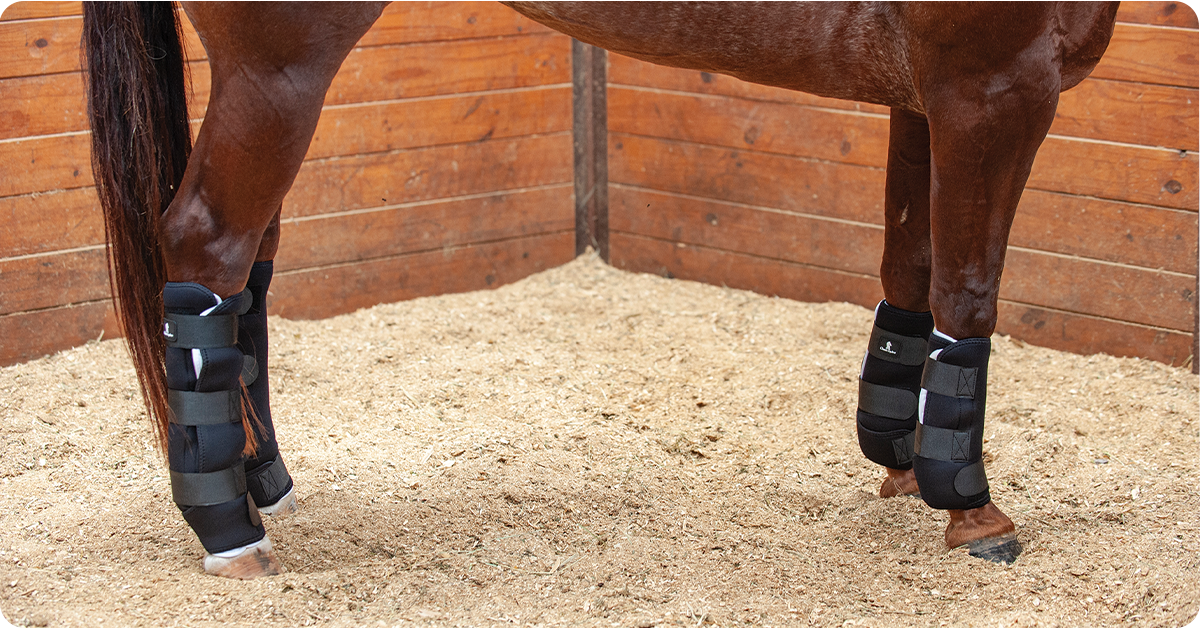
Gliding slide stops, fleet footed barrel turns or the sudden explosion of power when a roping chute opens. The agility of our equine partners is put on display each day as horses play an integral role on ranches and in the realm of western sports.
Horses are versatile athletes both inside and outside the arena. However, high-intensity activities put tremendous strain on tendons, bones and complex structures that make up the horse’s legs. As a result, the legs are often prone to significant injuries.
Protective leg gear plays an important role in supporting and protecting the horse’s legs. By selecting and properly using the right boots, you can help maintain your horse’s performance and overall health.
When to Use Protective Leg Gear
A horse’s agility and versatility is due in large part to its legs and a complex network of tendons, ligaments and bone structures. Unfortunately, the horse’s legs, particularly the lower leg, is also prone to a wide variety of injuries including sprains, bowed tendons, abrasions and more.
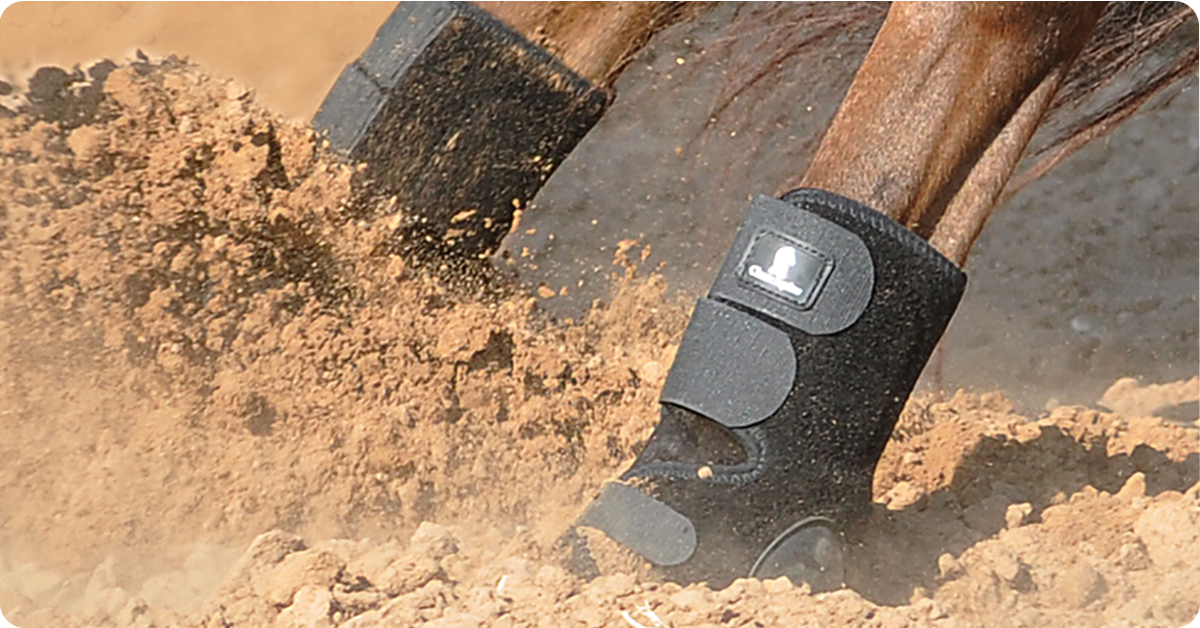
Leg gear for horses serves an important role in protecting and helping prevent these possible injuries. There is a wide variety of gear designed for specific and various degrees of activity. Depending on the needs of your horse, you might use protective leg gear for intense work (performance and speed events), leisure (trail and pleasure riding) and even extended periods of rest.
Types of Horse Boots and Uses
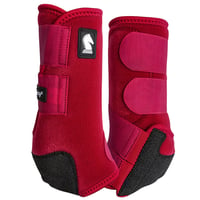 |
Sports Medicine or Orthopedic Support BootsSports medicine and orthopedic support boots are popular for protecting against contact injuries and supporting the front and back of the lower legs. They help prevent hypertension, suspensory injuries and sprains by offering additional support to the horse's leg 360 degrees below the knee down to the fetlock. These boots are a great option for protection during fast pace activities and speed events. |
 |
Splint BootsSplint boots are designed to protect horses that interfere, or hit themselves with the opposite leg, either on the front or the back. They protect the inside of the cannon bone, fetlock ligaments and tendons with a fortified padding that helps prevent contact injuries and abrasions. These boots are a good option for lighter activities like jumping, trail rides and endurance/cross country. |
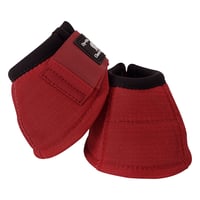 |
Bell BootsBell boots protect the front feet of horses that are at risk of overreaching. Some horses are prone to overreaching or hitting the heel/coronet band of the front or opposite leg. Bell boots help protect against possible contact injuries as well as help prevent the horse from stepping on and pulling off shoes. Use these boots if you notice scrapes on the heels and coronet band or have a horse that is constantly losing front shoes. |
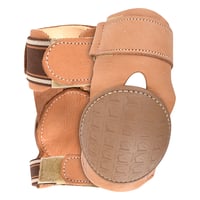 |
Skid BootsSkid boots protect the horse’s lower hind legs including the fetlocks and pasterns. Oftentimes, skid boots are open in the front with a solid covering along the back of the fetlock joint to help protect against harsh contact during aggressive stops and active riding. Skid boots can also come in higher boot options to protect the back leg cannon bone, splint bone, tendons and ligaments. These boots are popular among reiners and ropers who rely on hard stops. |
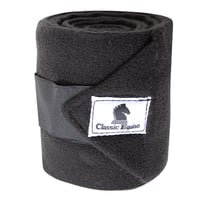 |
Polo WrapsPolo wraps offer protection against minor scrapes and bruises and can help prevent irritation from sand or arena footing. Polo wraps are a good option for young horses in training that are not as sure footed in the arena or round pen. Polo wraps are also a great option for protecting past injuries from further irritation and are common among English riders. |
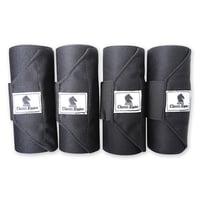 |
Standing WrapsStanding wraps provide support to tendons and ligaments and prevent fluid build up or “stocking up” after a strenuous workout or when a horse is standing stationary for long periods of time. Much like compression socks, standing wraps can help protect the leg by promoting good blood flow and supporting internal structures for horses on stall rest or being trailered long distances. |
 |
Shipping BootsShipping boots are specifically designed to protect a horse’s legs while traveling. These boots are heavily padded and extend from the knee or hock all the way down to the fetlock. Like standing wraps, shipping boots help provide support and promote circulation during long trailer rides. |
How to Select Protective Leg Gear
Choosing the right horse boots includes selecting gear that fits and is functional for the activity the horse is performing.
Sizing
Making sure your leg gear fits will have a major impact on the effectiveness of your boots and the health of your horse. Boots that are too small can restrict blood flow, chafe or even lead to possible injuries. On the flip side, boots that are too big can slip or twist which can lead to accidents and even cause more harm than what the boots are intended to prevent.
Follow specific sizing instructions on the boot packaging. Most fitted boots will have three primary sizes (small, medium and large) that vary in height and circumference. Before going to the store to pick out your boots, measure the circumference of your horse’s fetlock at the widest point and then compare this to the size chart on the boots you are looking to purchase.
Activity
Take into account the specific task you are intending to use the boots for whether that be a high-intensity activity, leisure ride or traveling/stall rest. Then match the leg gear to your specific task.
Conformation
Take the horse’s conformation into consideration as well. If you have a horse that is prone to interfering or overreaching, consider using leg gear designed specifically for these problems such as splint and bell boots.
How to Apply Leg Gear
Leg gear is only effective if it is applied correctly. Improperly placed gear can actually cause injuries to the tendons and ligaments or contribute to accidents.
Placement
Proper placement will play a role in not only the effectiveness of the leg gear, but also safety and functionality. Boots that are not placed right can interfere with a horse’s movements which could lead to accidents or injuries.
Some styles of boots will be pre-shaped to fit a specific leg and part of the horse. Sports/support boots, skid boots and shipping boots will all have rounded contours that are designed to support the fetlock. Most of these also have “L” and “R” labels on the inside of the boot designating which leg it should be placed on.
Leg wraps are not so easily placed and will take significant practice to get it right. Be sure to consult a vet or experienced horseman when learning to apply polo and shipping wraps. Wraps that are placed incorrectly can actually cause severe injuries including bowed tendons.
Follow instructions from the manufacturer when applying leg gear.
Cleanliness
Always check your leg gear for cleanliness before placing them on your horse. Boots that have been used can become hard with sweat and sand or even contract debris such as burs. These can cause abrasions to the legs when the horse moves.
Use a brush to loosen and remove any sand build up and run a hand over the inside to feel for any hard spots or debris. If the boots are full of hard sweat marks you might consider purchasing a new set of leg gear.
Helping Your Horses
Protecting your equine partners from possible leg injuries is important to ensuring they remain healthy and performance ready. Help your horse stay safe by stopping into your local IFA Country Store for protective leg gear and boots from top-quality brands including Professionals Choice, Iconoclast and more.
Ask a knowledgeable member of our staff if you need help selecting the right size or determining the right style of protective leg gear for your horse.
Information provided by Lindsey Hutchison, Animal Health, Tack & Farrier Dept. Manager, Riverton IFA Country Store; Jordan Ellis, Branch Manager, Las Vegas IFA Country Store; Mikyla Bagley, IFA Content Specialist and Horse Owner; and Terry Boren, IFA Tack & Farrier Category Manager. Photos provided by Classic Equine.




